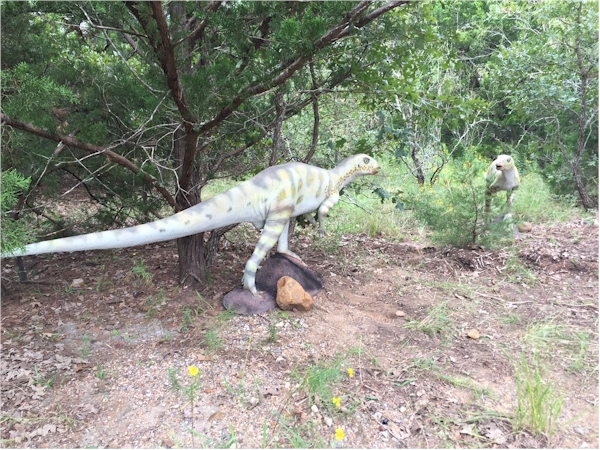|
Pronunciation: hyp-see-loh-foh-don
Translation: High-Ridged (frill) & Lizard Toothed Diet: Herbivore Height: 2 feet (.6 meter) Length: 5-6 feet (1.8meters) Weight: 150 pounds (68 kg) Location: Europe, mainly the Isle of Wight, off the Southern English Coast. Time: Early Cretaceous, 130 to 125 million years ago |
Hypsilophodon was discovered in 1849 by William Fox. But for about 20 years, it was widely believed by paleontologists (including Sir Richard Owen himself) that Hypsilophodon was nothing more than a juvenille iguanodon. This little biped (walked on two legs) was a very fast runner with a stiffened tail that helped it balance well. Hypsilophodon had four toes and five fingers, including an opposable. They had a beak with about 30 teeth and was primarily herbivorious, mostly eating seeds like the ones from cycad plants.
A bonebed of about 20 Hypsilophodon fossils were unearthed together on the Isle of Wight. This indicates that a herd of them died together, which implies they probably lived together in herds. They laid eggs and may have cared for their young for at least a little while, evidenced by eggs found carefully placed in Hypsilophodontid nests.
A bonebed of about 20 Hypsilophodon fossils were unearthed together on the Isle of Wight. This indicates that a herd of them died together, which implies they probably lived together in herds. They laid eggs and may have cared for their young for at least a little while, evidenced by eggs found carefully placed in Hypsilophodontid nests.

